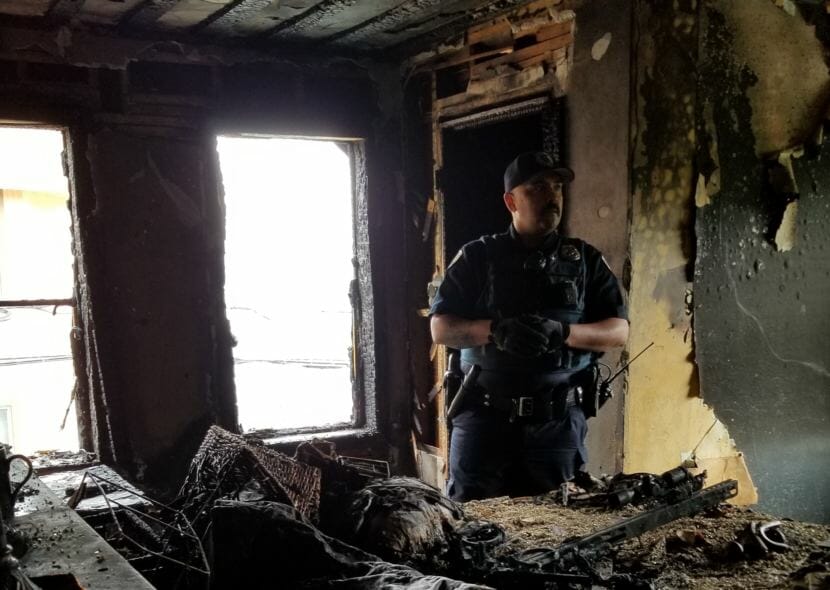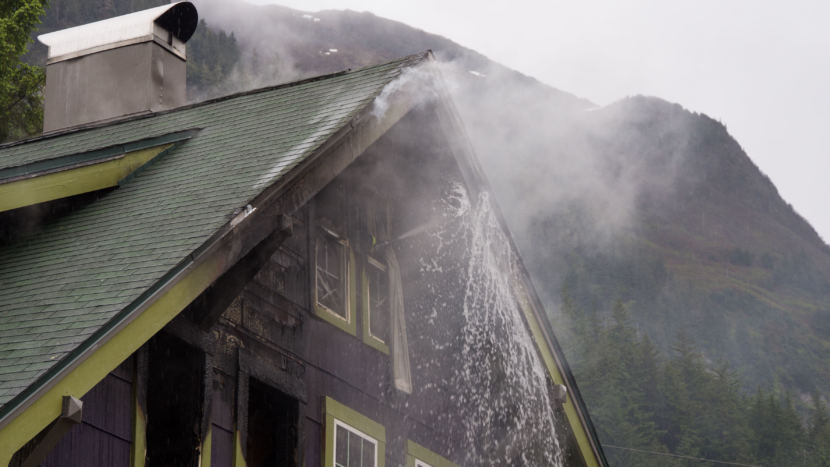
When a fire broke out at a historic home in downtown Juneau in late May, the owners were relieved no one had been hurt. More than a month later, they’re still a long way from moving back in.
Alaska state writer laureate Ernestine Hayes had owned the home for about a month when she learned on May 28 that it was on fire.
She and her family were still moving their belongings into the three-story home at 505 Franklin Street, known as the Dapcevich House to many people in Juneau. It would allow Hayes to realize her dream of living in a multi-generation home.
But that plan will have to wait while insurance and rebuilding efforts play out in the coming months.
“We’re still in the preliminary stages, which is a little difficult to believe after these weeks,” Hayes said.
Hayes’ son Joshua Stephenson and his wife were in the home cleaning and unpacking when they noticed smoke pouring from the master bedroom. They got out safely before the fire department arrived.

Crews quickly put out the flames, but Hayes said there’s a lot of damage.
“All the floors received water damage, actually,” Hayes said. “The main floor is the second floor, the third floor is where it started and then the attic also received a lot of water damage and smoke damage.”
Damages were estimated at $100,000.
The source of the fire hasn’t been determined, but an initial investigation by Capital City Fire/Rescue found two potential heat sources — improperly discarded smoking materials and electrical wiring. Hayes believes the home’s aging wiring was to blame. The house was built in 1913.
“When we purchased it the month before … during inspection the inspection person found a number of electrical issues that needed to be corrected before we bought it,” Hayes said.
The home was insured, and Hayes and her family are now living in a house they recently bought in the Flats.
Originally, they planned to rent that property to help pay the mortgage on the Franklin Street home.
Before they can rebuild, they need to clean up the damage inside. Before that, the house needs hazmat testing. And the insurance company has to sign off on every step.
Hayes said the third and fourth floors will need to be rebuilt.
“We’ve been given an estimate that it will probably be between six and nine months after permits are received,” she said. “Inside they will probably knock it down to studs and joists because of all the water damage.”
Though the process is long and often frustrating, Hayes said she knows they were lucky, all things considered.
Many of their possessions had not been unpacked, so they didn’t lose as much as they could have.
Still, they were worried about the boxes of Tlingit regalia that were in the attic.
Their button blankets and other items had been subjected to a lot of smoke, so they took them to a local company for ozone treatment.
“Virtually everything came out usable and in good condition, except for just a few things,” Hayes said.
Hayes said their insurance adjuster bought and read one of her books on his way up from Seattle.
When he arrived to evaluate the damage, he reminded her that her clan, the Kaagwaantaan, are known as the Burnt House People.
“To me it seems it adds value to our blankets to smell a bit of smoke,” she said. “It’s like a person having scars — it adds to their story.”
Hayes and her family still haven’t received any money from their insurance company to help with costs in the meantime.
But a local GoFundMe campaign raised more than $4,700 to help them. Hayes said the North Words Writers Symposium in Skagway also took up a collection.